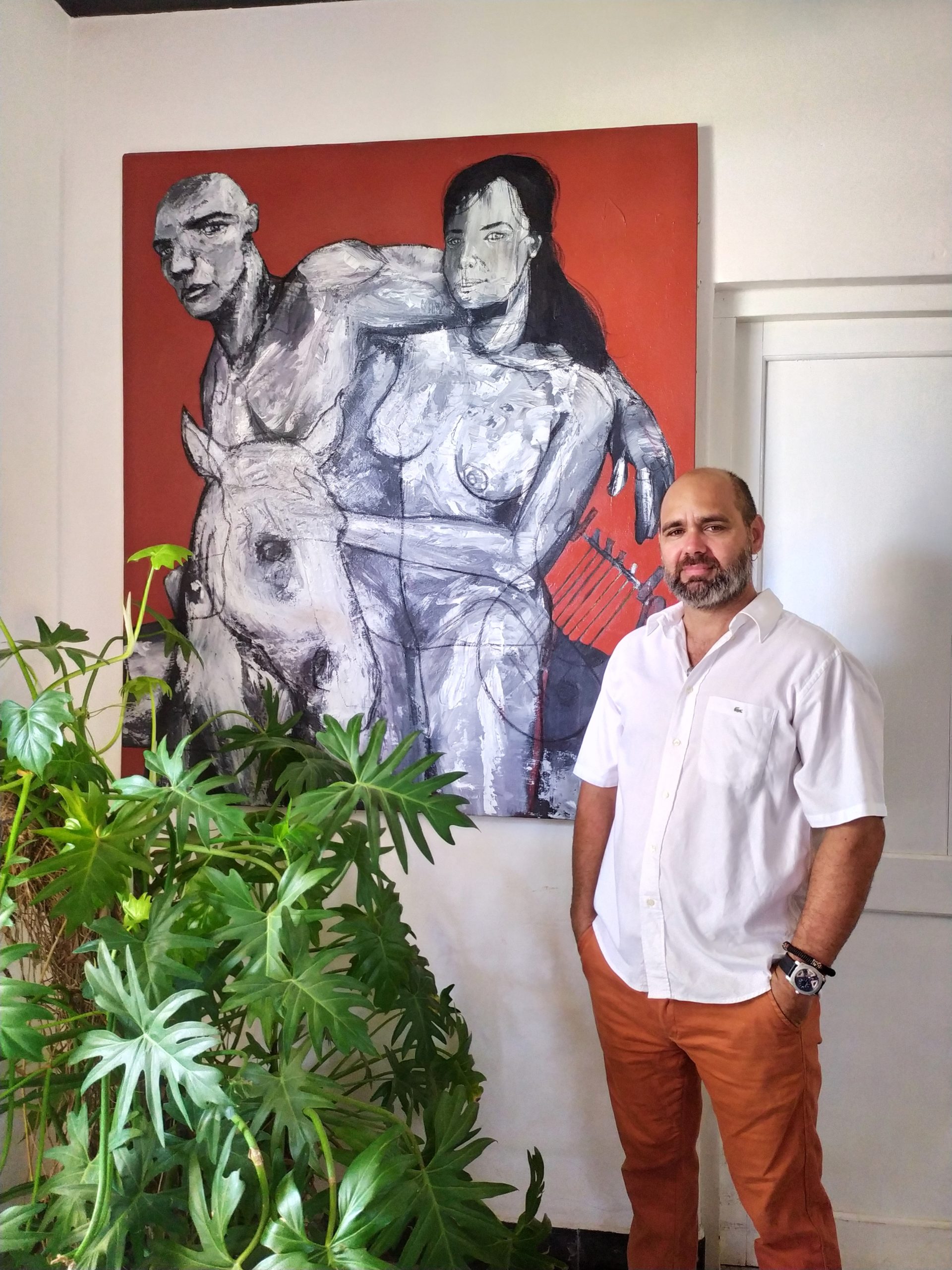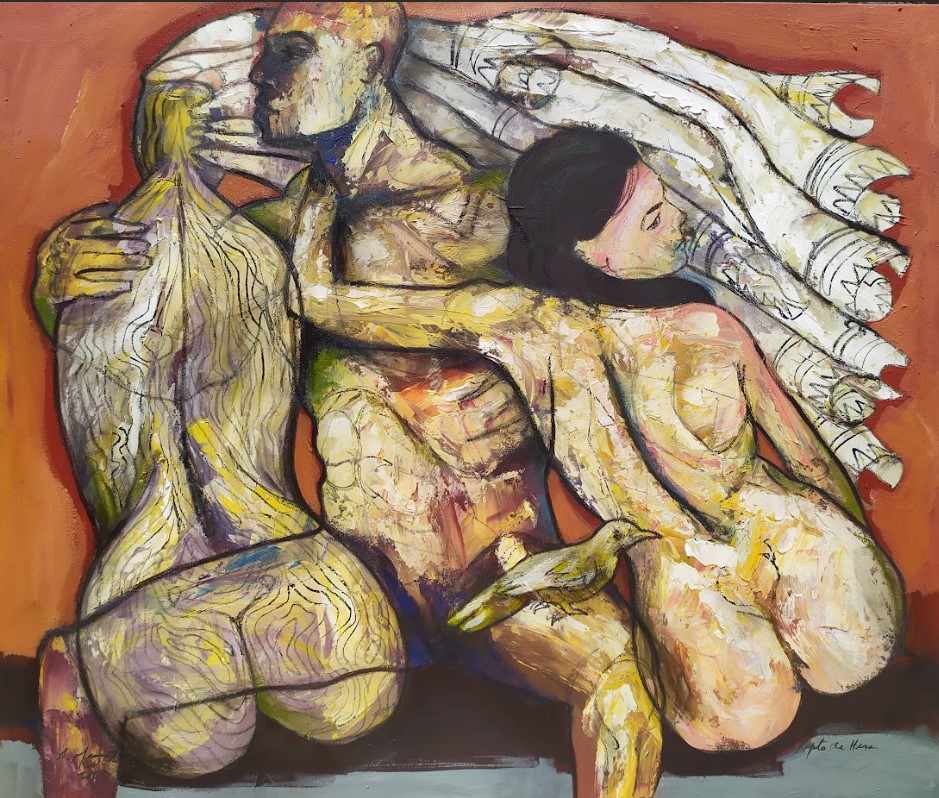
A new exhibition by Abel Massot is taking Gallery Bogart on a journey through Greek mythology. Del mito, el rapto, translated to “Of the myth, the abduction” features paintings developed by Massot over the course of two years. Born in Havana, Cuba, Massot is known for expressionist, stark, and immersive works featuring faces and stripped-away forms of the body. “The power and emotional capacity of Massot’s aesthetic is what first drew me to his work and is what continues to excite me about his newest series,” says gallerist Miller Bogart. We spoke to Massot about his work, his inspiration, and how he invites viewers of his art to confront their inner selves.
Tell me more about your new series.
When conceiving each individual piece in this series, I directed my attention specifically towards abduction in Greek mythology. Each piece is recognized for its connection to the literary text. My inspiration for this collection stemmed from exploration and research to incorporate new formal and conceptual elements into my work. Del mito, el rapto is a set of paintings that focused solely on the phenomenon of abduction, and the entire creative process was directed towards this theme. It is a production that forms an aesthetic-expressive body of work not for direct comparison with the narrative but for understanding, evaluation, and interpretation beyond the myth. In general, it is a proposal with a personal vision of the phenomenon, offering a discourse that reflects my cultural experiences, interests, and social phenomena.

What inspired this series and your interest in Greek mythology?
This interest began in 2017 with a travel experience across several European countries, marking an encounter with collections from various art museums, especially the classical collection at the Louvre. The confinement period in 2020 allowed for self-discovery and personal introspection, and this exploration resulted in several paintings with representations of horses and riders, an iconography that served as the foundation for the present series. During this initial stage, works like The Abduction of the Daughters of Leucippus (2021), The Abduction of Persephone (2021), and an initial version of The Abduction of Europa emerged, reflecting a continuity in my quest for new solutions while maintaining the aesthetic values of my work. The following years involved a deeper process of study and creation, resulting in several large-format pieces loaded with dynamism and significant gesturality that completed the Del mito, el rapto collection.

Where do you see your work fitting with other contemporary artists?
Undoubtedly, contemporary art is a reflection of our time, given its critical and experimental nature, where questioning traditions is fundamental. This, in my opinion, is a cornerstone of postmodern thought. The questioning of traditions is closely related to the reinterpretation of other artistic works. Literature has always been exposed in the artist’s unique world, defining a purely personal concept, visuality, and a way of creation with its own language. Contemporary thought always draws from the conflicts and realities of societies, leading us to reflect human actions.
The dialogue between my work and that of other contemporary artists lies in reflecting basic elements of previous works and transforming them in my creative process with a neo-expressionist influence in pictorial treatment. It features a personal drawing isolated from academicism, aiming to conceive a new work that proposes alternative readings and meanings. In this series, I direct the focus towards the act of abduction, not aiming for an exact reflection of the literary text. I omit elements such as landscape and clothing to emphasize only the figures, the act itself, and the diverse expressions and emotions of the subjects.
Answers by Massot have been translated from Spanish to English.


